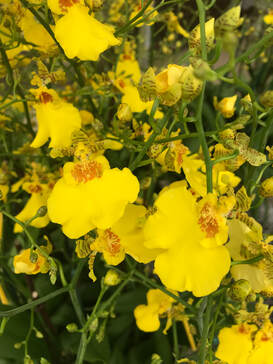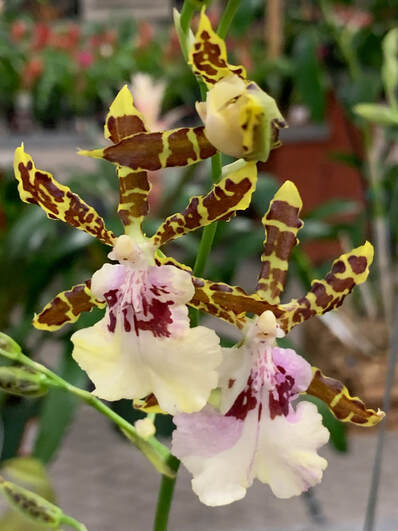|
Better-GroOrchidBlog
The Oncidium genus includes roughly 330 species, but it’s often used in a less-technical term to refer to any number of 100,000-plus varieties and hybrids. The unifying trait of all of these orchids, regardless of how the term is used, is their swelling lower lip.  Onc. Sweet Sugar 'Lemon Drop' HCC/AOS Onc. Sweet Sugar 'Lemon Drop' HCC/AOS What Are Oncidium Orchids? In April 2013, researchers and orchid experts finally agreed to amend the Oncidium genus, which had come to be a “dumping ground” for orchids that didn’t fit in other genera. Most notably, equitant Oncidiums were reclassified into the Tolumnia genus. Other orchids that were reclassified included the mule-ear orchid, which was moved to the genus Trichocentrum, and the Brazilian oncidium, which is now part of the Gomesa genus. These changes show that even expert growers and researchers are still learning about the plants they love. While most official literature (such as American Orchid Society publications) has been updated to reflect these changes, Oncidium is still used by many to refer to plants that are technically part of other genera. After all, these orchids still all have a swollen lower lip. Thus, the term may be used to refer to about 330 species or to 100,000-plus hybrids. (Below, equitant Oncidiums will be compared to other types of orchids in the genera even though they’re now part of another genus.) Where Do Oncidiums Grow? Oncidium orchids are frequently found in Mexico and the Caribbean, although their natural habitat ranges from the southern portions of Florida through much of South America. They grow at all elevations in this large region, from sea level to the tree line of the Andes. Most Oncidiums are epiphytes and grow on trees. A few species are lithophytes (growing on rocks) or terrestrials (growing on the ground).  Onc. Wild Willie 'Pacific Bingo' Onc. Wild Willie 'Pacific Bingo' What Do Oncidium Orchids Look Like? Oncidiums are named for their flowers’ swollen lower lips. Oncidium comes from the Greek word “onkos,” which means “swelling.” The flowers are dominated by their lower lips, which are large, and often have ornate calluses or crests. Beyond this first common trait that defines all Oncidiums, these orchids can be further segregated into three categories based on appearance.
How Are Oncidiums Cared For?
Oncidiums don’t have many unique needs. Follow these general orchid care tips, and your Oncidium orchid should grow to be healthy and have great blooms. Comments are closed.
|
Resources
|
Company |
|
